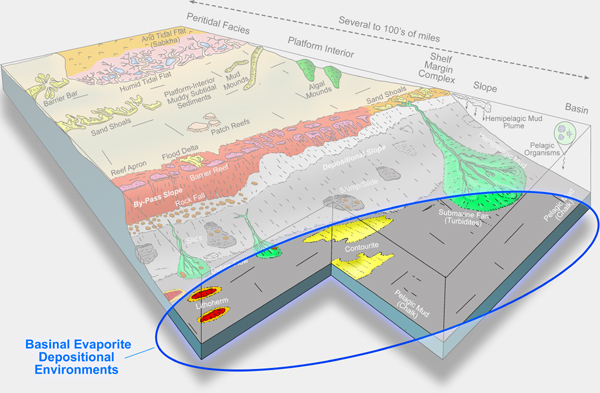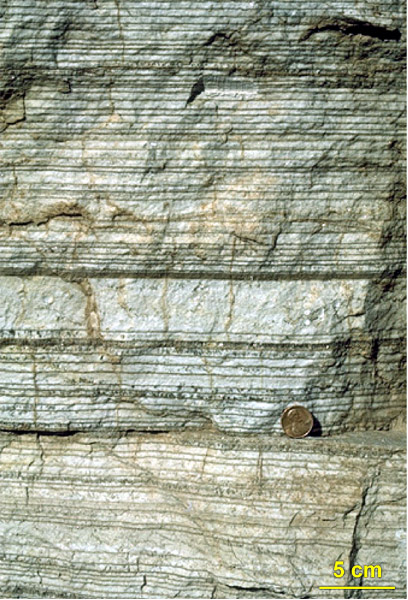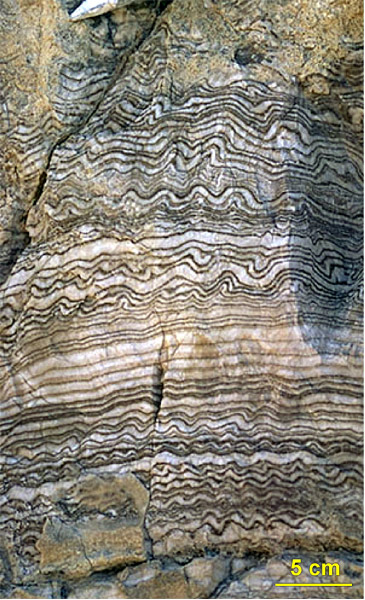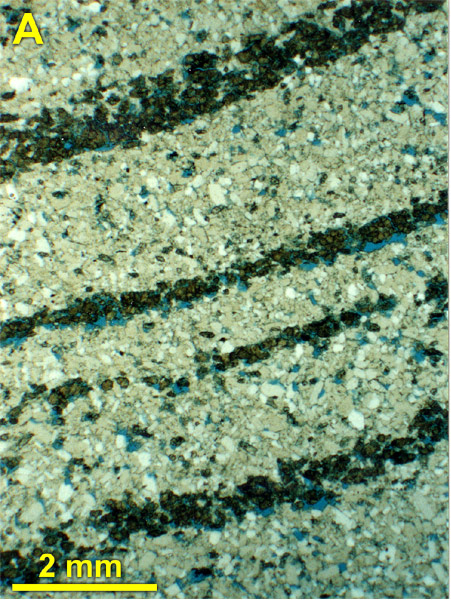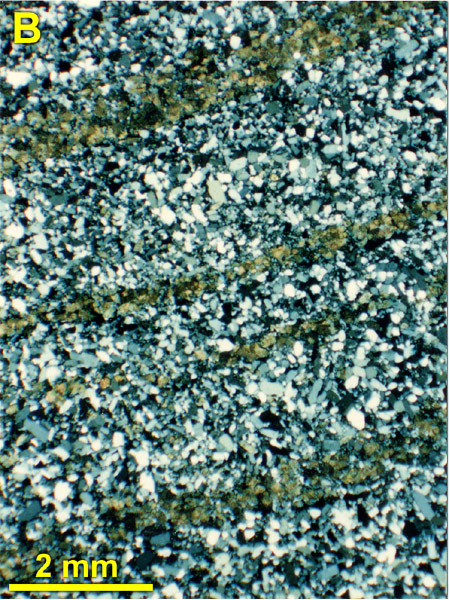
Platform-Margin, Slope, and Basinal Carbonate Depositional Environments
Robert G. Loucks, Charles Kerans, Xavier Janson
Bureau of Economic Geology
| Design Objectives |
| Glossary |
| Credits |
| Back |
| Top |
| Exit |
 |
 |
 |
| Basinal Evaporite Depositional Environments
|
| During drops in sea level, some basins can become barred from the open ocean (below). Under arid conditions, water within the basin begins to evaporate and becomes oversaturated with respect to gypsum or anhydrite. Small crystals of evaporites precipitate out of the water column and are deposited on the basin floor forming laminated evaporites. During periods of freshing, calcite laminae can form. | ||
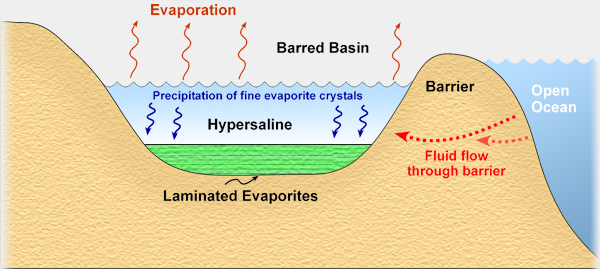 |
||
| Diagram of a barred arid basin where water level in the restricted area is lower than that of the open sea. Water is slowly recharged to the restricted area through the barrier. | ||
The
Permian Castile Formation in West Texas is an excellent example
of basinal evaporite produced in a barred basin. |
||
|
||
|
||
|
||
|
||
|
|
||
